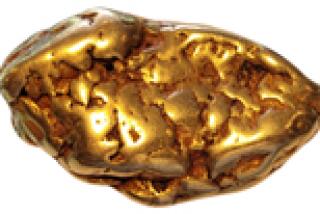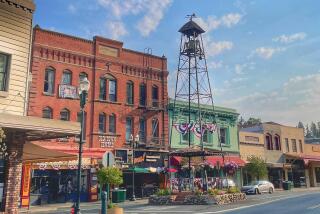John Livermore dies; geologist who found ‘invisible gold’ was 94
John Livermore, an exploration geologist whose discovery of minuscule but highly valuable particles of “invisible gold” in Nevada in the early 1960s set off a modern-day gold rush in the state, has died. He was 94.
Livermore died Feb. 7 at his Reno home of cancer, said Andy Wallace, his longtime business partner.
“He was probably the most successful exploration geologist in the last half of the 20th century,” said Wallace, chief executive of Cordex, the company Livermore founded in 1970 for mine exploration.
His impact on the industry was enormous, said John Dobra, a professor of natural resource economics at the University of Nevada at Reno.
Government agencies “had hypothesized that microscopic gold was out there, but John actually went out and found it,” Dobra said. “Most geologists never find a single mine, but John found many.”
While managing an old silver mine in Eureka, Nev., Livermore made his most important discovery after reading an obscure 1939 government report.
“The key phrase was, ‘This is the type of deposit that old-timers could have missed right on the surface because it didn’t pan,’” Livermore told NBC News in 2009.
His search for treasure that can’t be seen by the naked eye began at a hotel bar in Ely, Nev., where he met Ralph Roberts, a government geologist who had written a 1960 paper about the possibility of mineral-bearing rocks in the state.
“Ralph’s work gave me an outline of where to prospect instead of just walking all over the place,” Livermore told USA Today in 1997.
Armed with little more than a hammer and canvas bags, Livermore and a colleague, J. Alan Coope, drove to northeastern Nevada on behalf of their employer — Newmont Mining — to collect 5-pound rock samples in 1961.
To determine whether the rocks held riches, they needed to undergo a high-heat “fire assay” method of ore analysis that can measure tiny amounts of metal.
They soon learned that they had struck gold.
“We had no idea about the size and scope of what we’d found,” Livermore recalled in the 1997 interview.
The discovery ushered in a new gold rush era, creating a frenzy to rival the California Gold Rush of the mid-1800s, and marked the beginning of mechanized mining for gold that cannot be seen by the naked eye.
It eventually established northern Nevada as one of the world’s premier gold districts, according to the Mining Hall of Fame, which added Livermore to its ranks in 2000.
The find led to the first large gold mine on what became known as the Carlin Trend because it runs under Carlin, Nev. According to Newmont, Carlin has produced more than 70 million ounces of gold, worth about $85 billion.
Since Livermore was a Newmont employee, he “did not participate financially” in the mining that resulted from his geologic detective skills, Wallace said. But he did receive a thank you note from the company.
Born April 16, 1918, in San Francisco, John Sealy Livermore was one of five sons of Norman Banks Livermore Sr., an engineer who helped build Folsom Dam and found the Pacific Gas & Electric Co. His mother, the former Caroline Sealy, was an early Marin County conservationist.
His great-grandfather, Horatio Gates Livermore, briefly participated in the California Gold Rush before serving as a state senator, and his grandfather helped develop a profitable mine in Napa County, Livermore said in an oral history.
Growing up, he developed an affinity for the outdoors at the family ranch his grandfather bought in 1880 near Calistoga and as a boarder at the Thacher School in Ojai.
In high school, he worked for a mule-packing business run by his oldest brother, Norman, who would serve as Gov. Ronald Reagan’s state secretary for resources.
After graduating from Stanford University in 1940, Livermore worked for the U.S. Geological Survey and then served in the Naval Civil Engineering Corps during World War II. Assigned to the Seabees, he spent a year building facilities in New Guinea.
In 1952, he joined Newport Mining and traveled the world for his work. He led the company’s exploration efforts in Canada from 1962 to 1970, when he formed Cordex and soon discovered another gold deposit in Nevada.
When Cordex borrowed $17 million to develop the Pinson deposit in the state in 1980, the company was able to repay the loan in less than 14 months, Forbes magazine reported in 1987.
The soft-spoken Livermore was tall — about 6 foot 5— and humble, did not own a television set and read constantly, Wallace said.
Since 1972, Livermore had lived in a condo in downtown Reno and gave most of his money away, “anonymously if possible,” Wallace said. His major philanthropic gifts included endowing chairs at Stanford and the University of Nevada at Reno.
In his early 90s, Livermore continued to actively prospect for gold. He once tried to explain the allure by recalling the words of an elderly former boss who kept returning to the field.
“He said, ‘I want just one more, John. Just one more.’ Ahh yes,” Livermore said. “I know the feeling exactly.”
Survivors include his brother, Putnam Livermore.







